Natrix helvetica
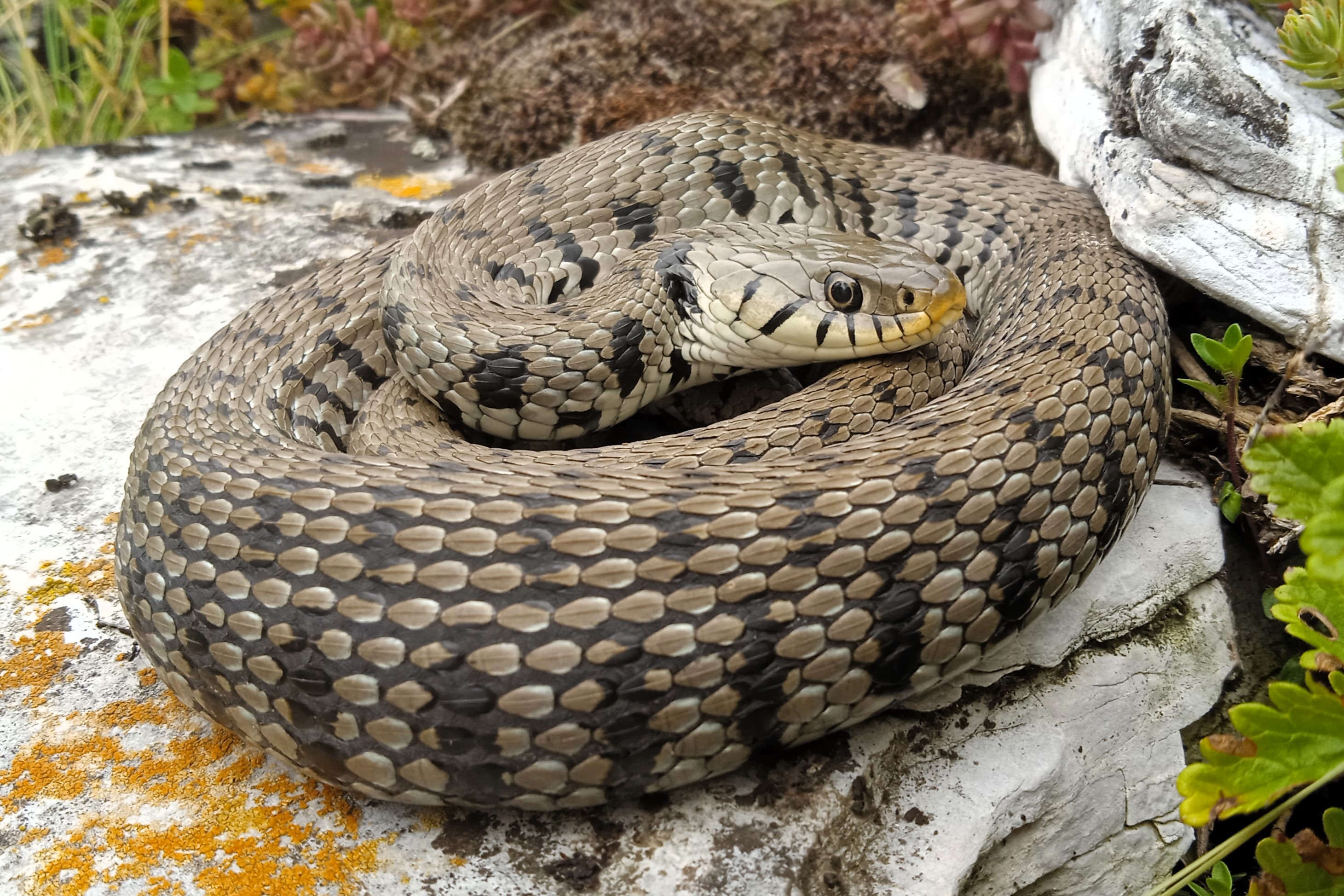

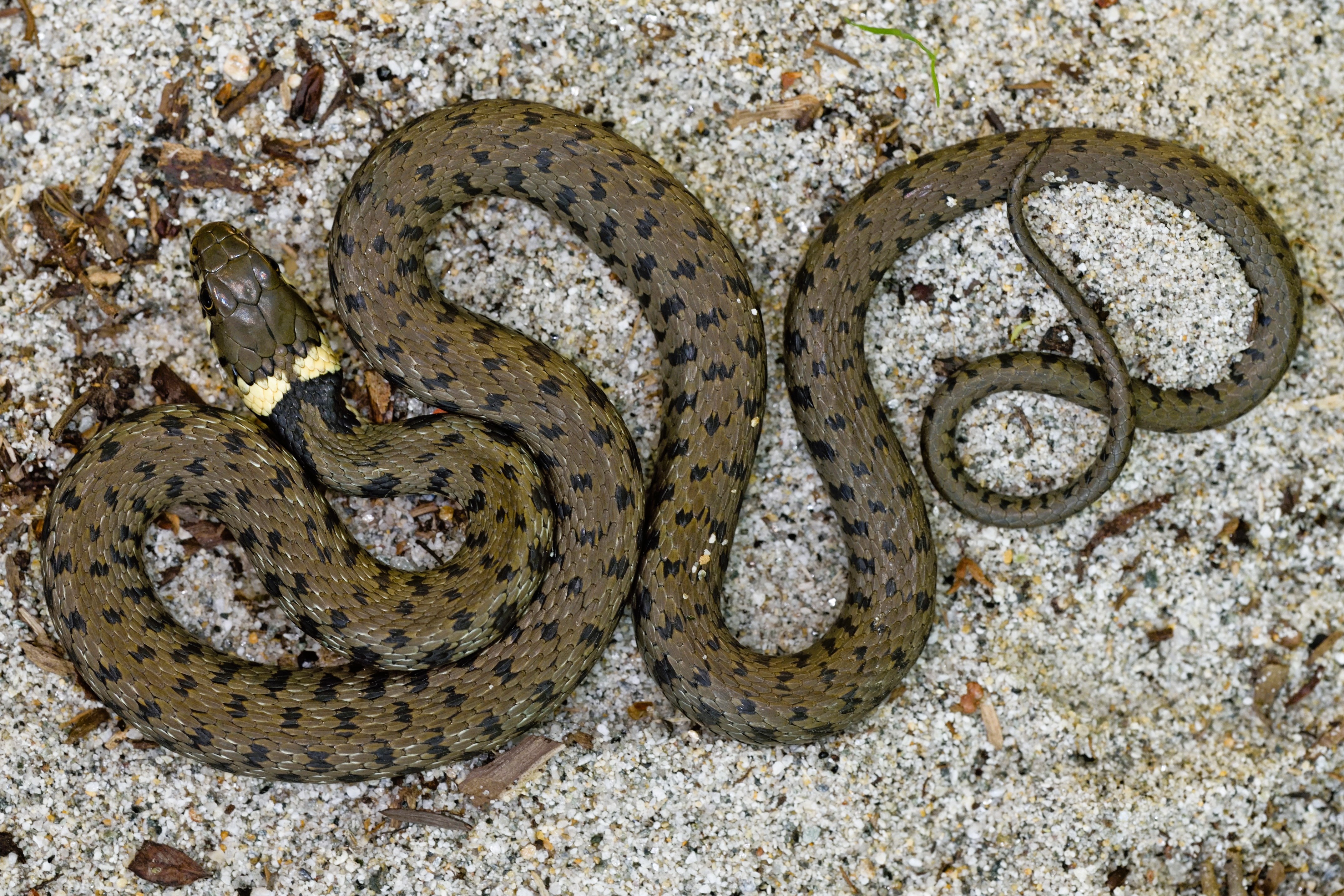
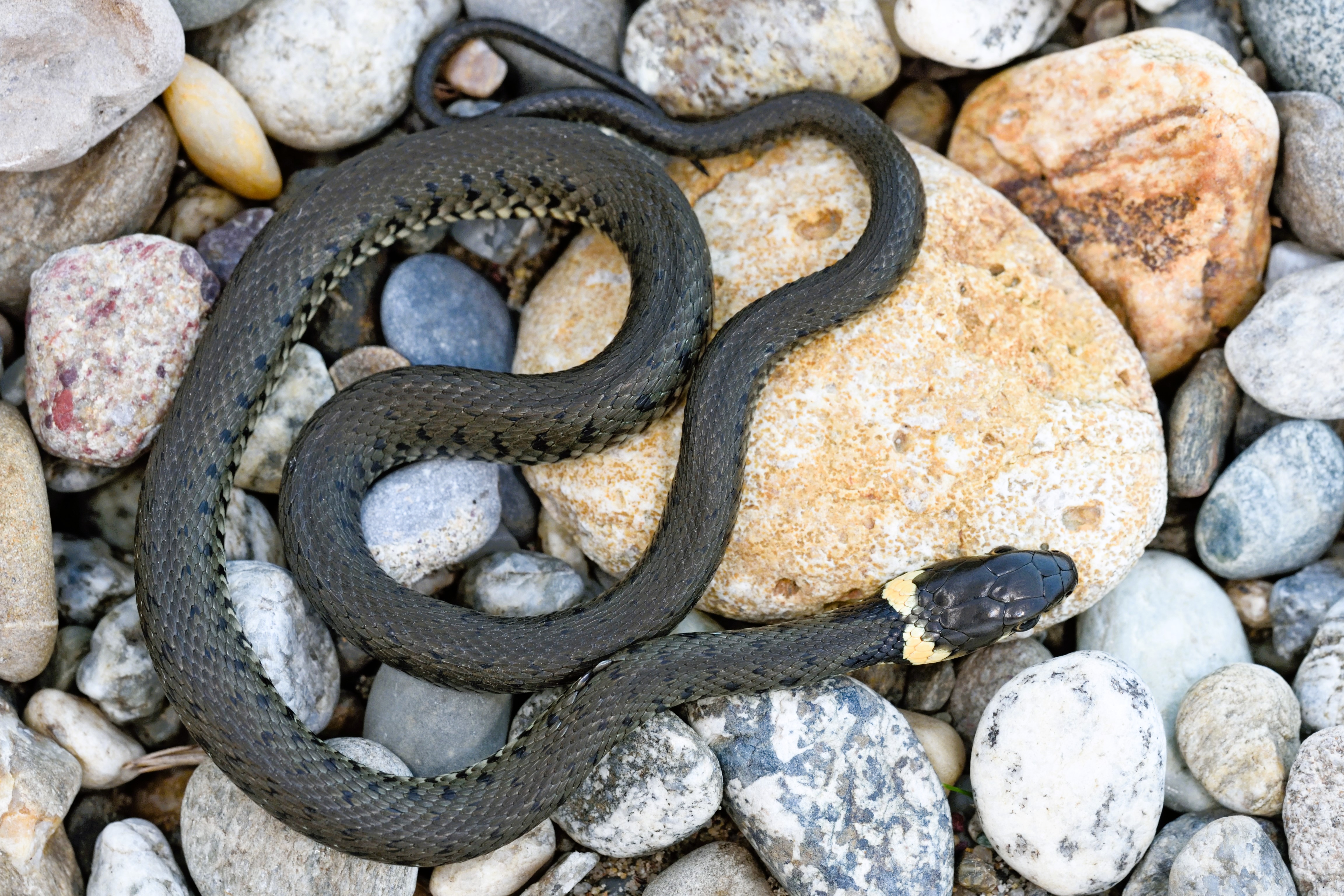
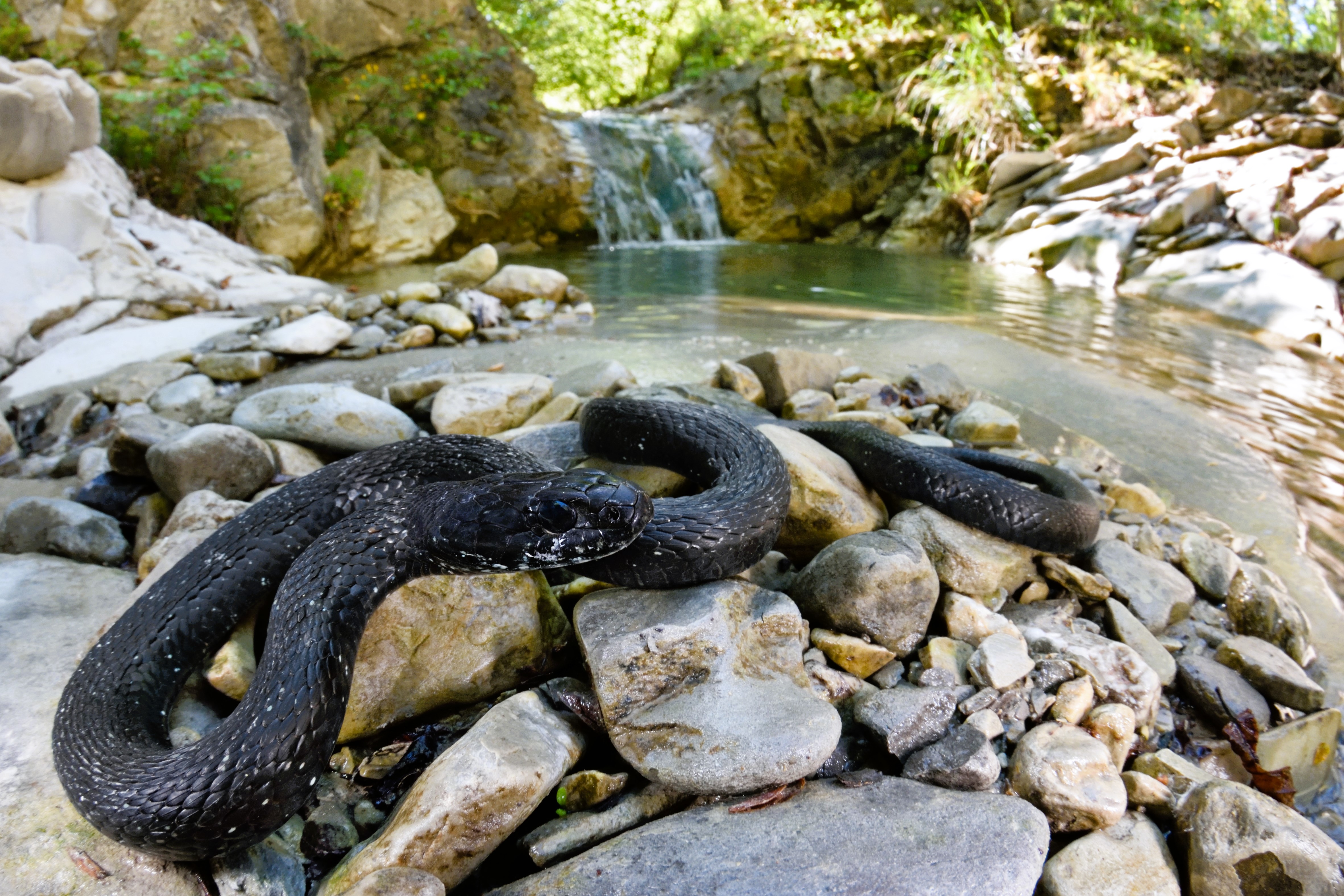
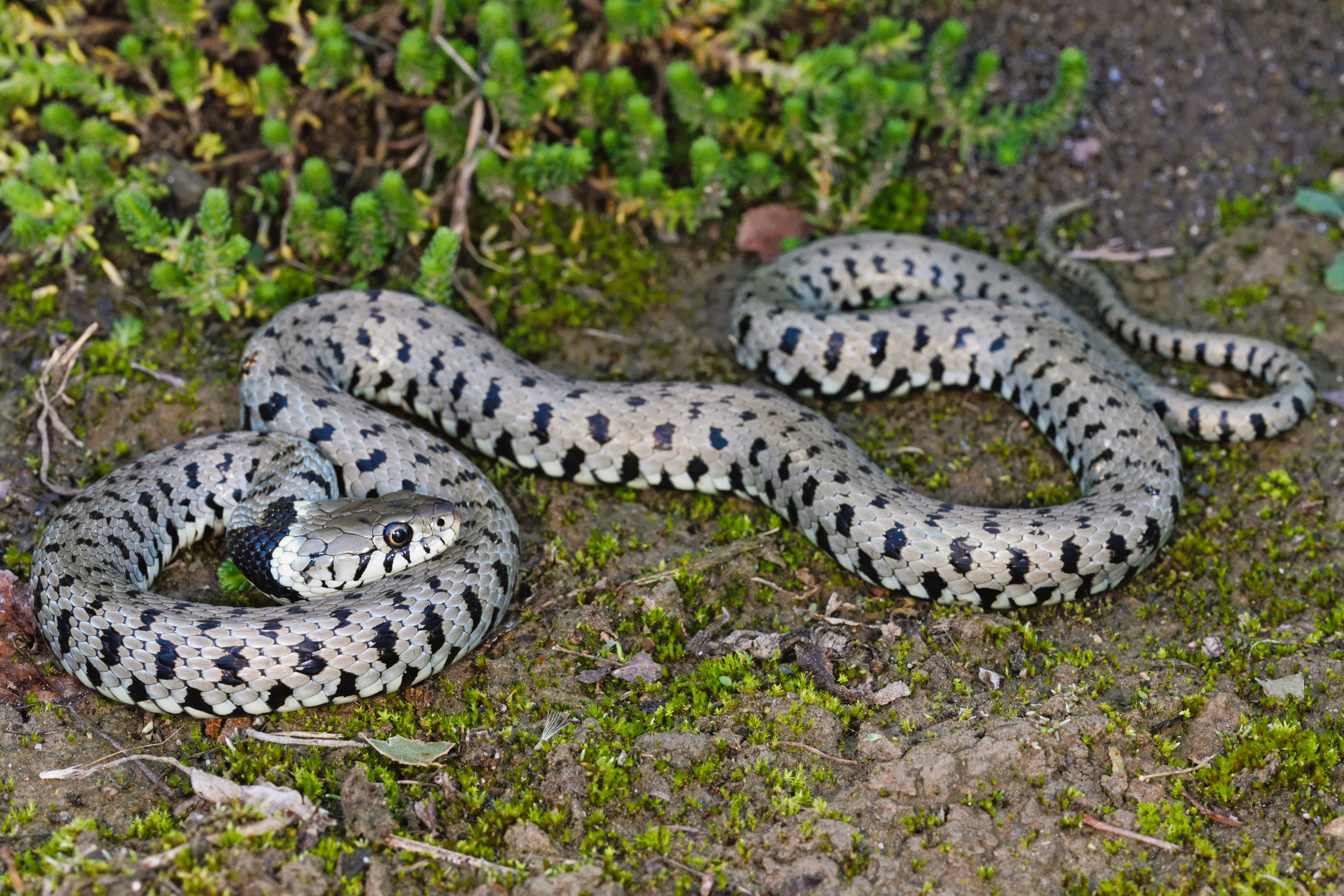
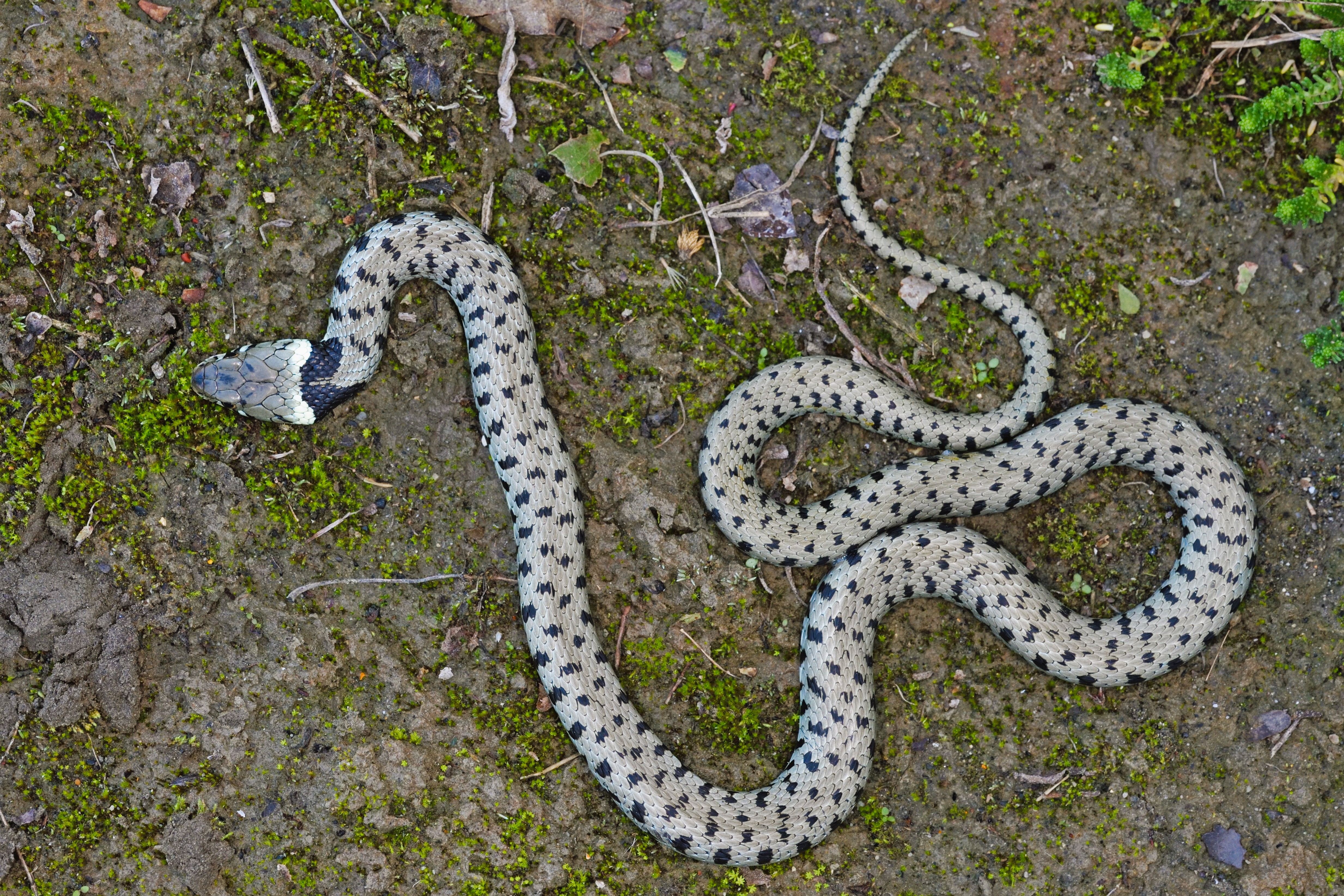
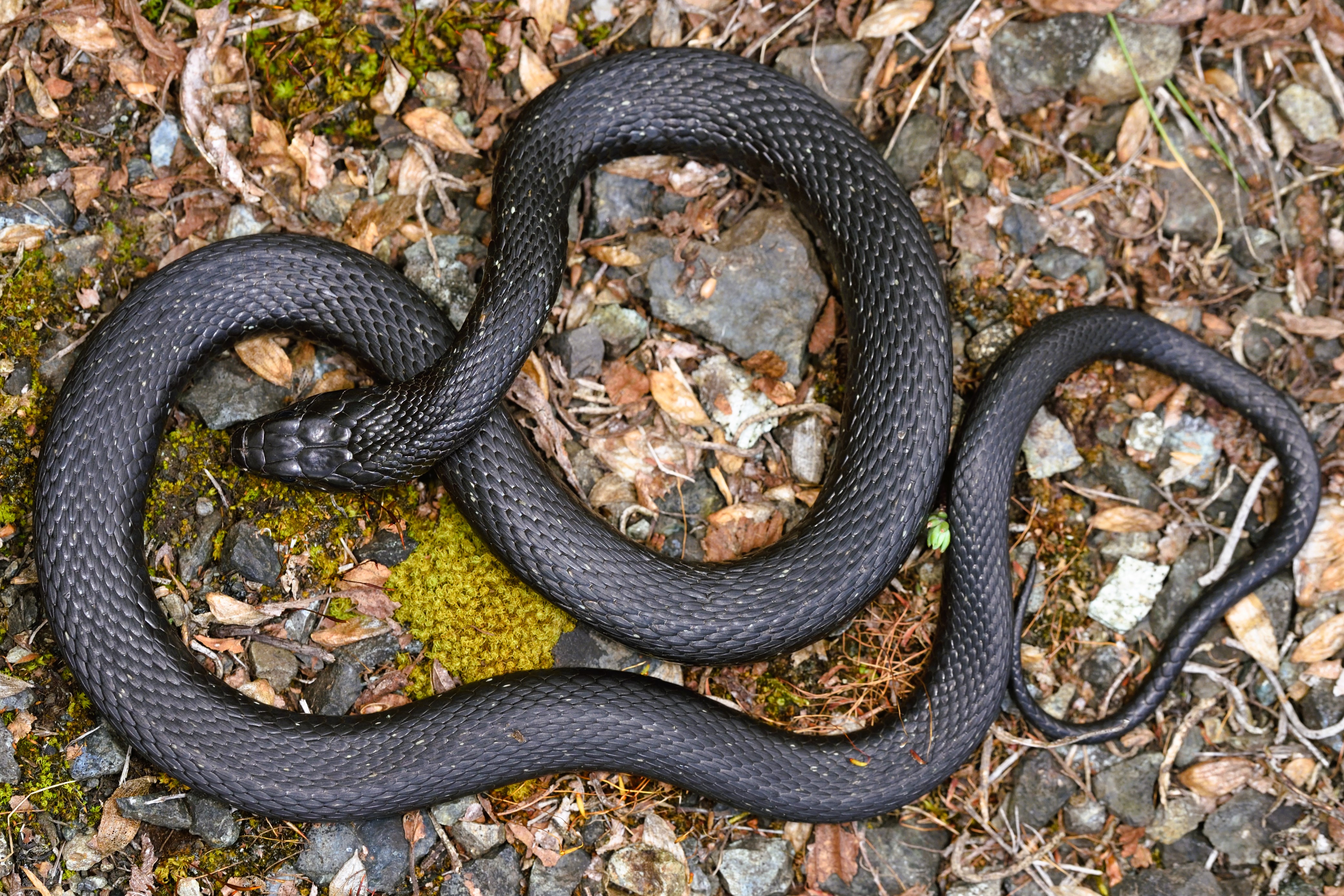
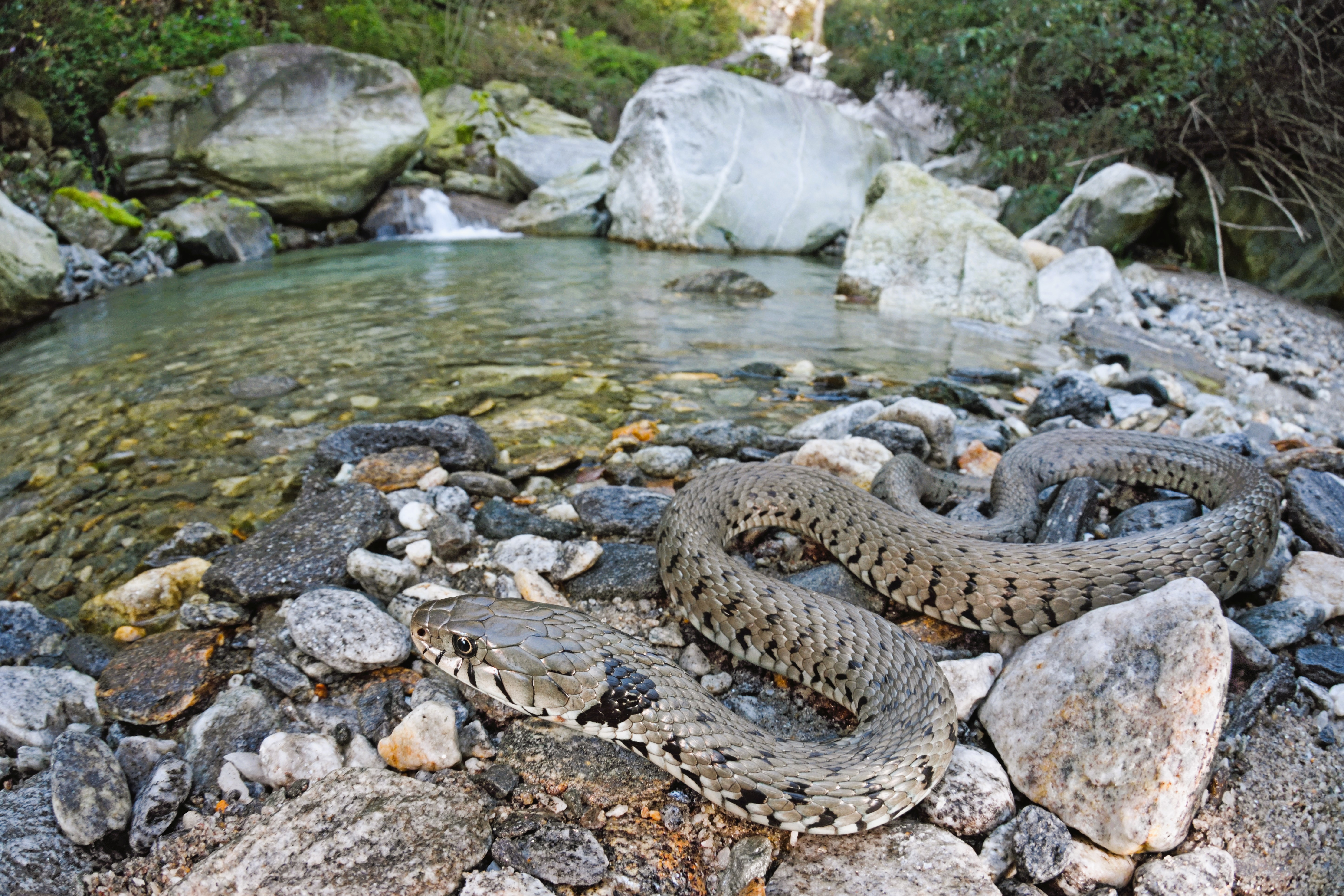
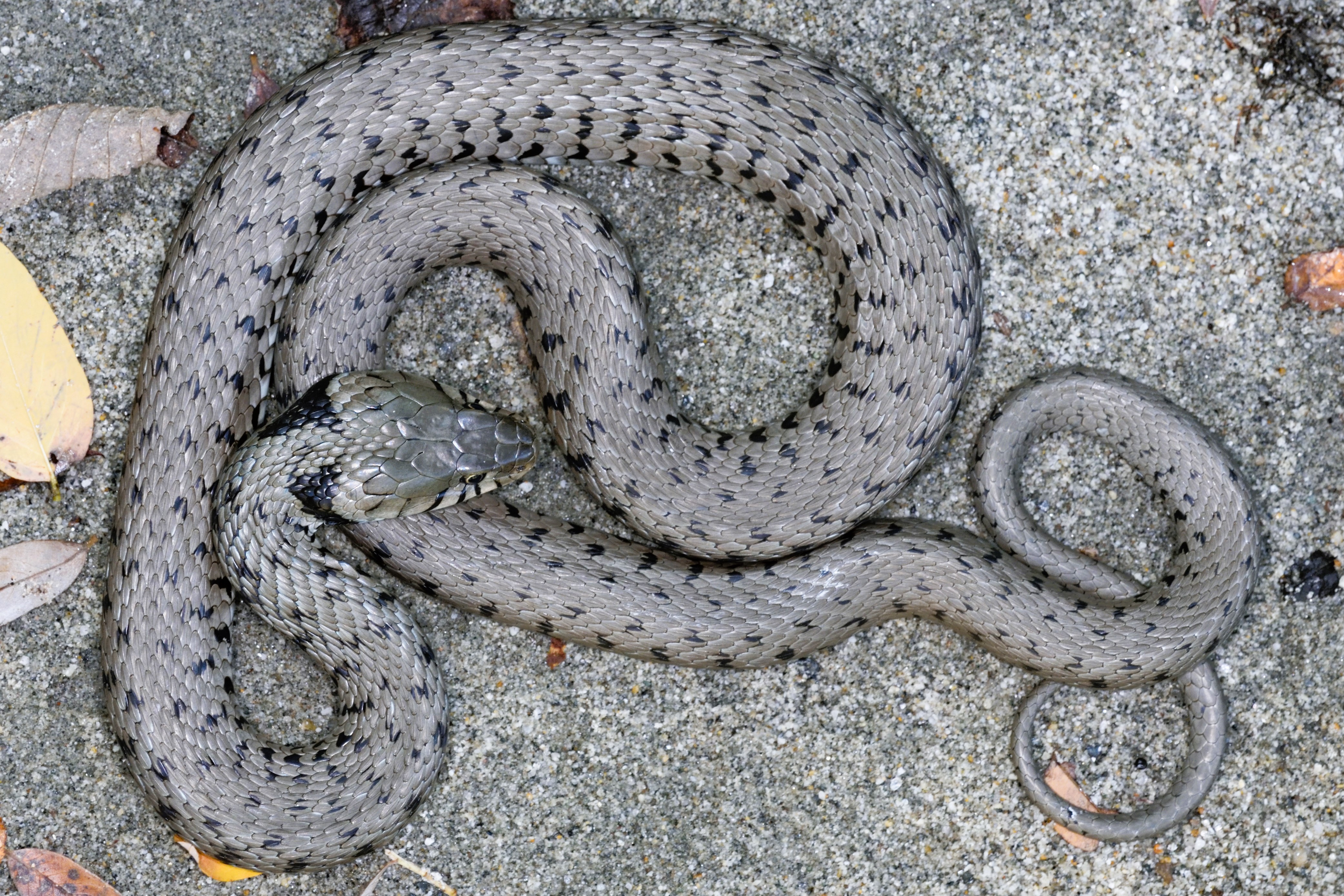
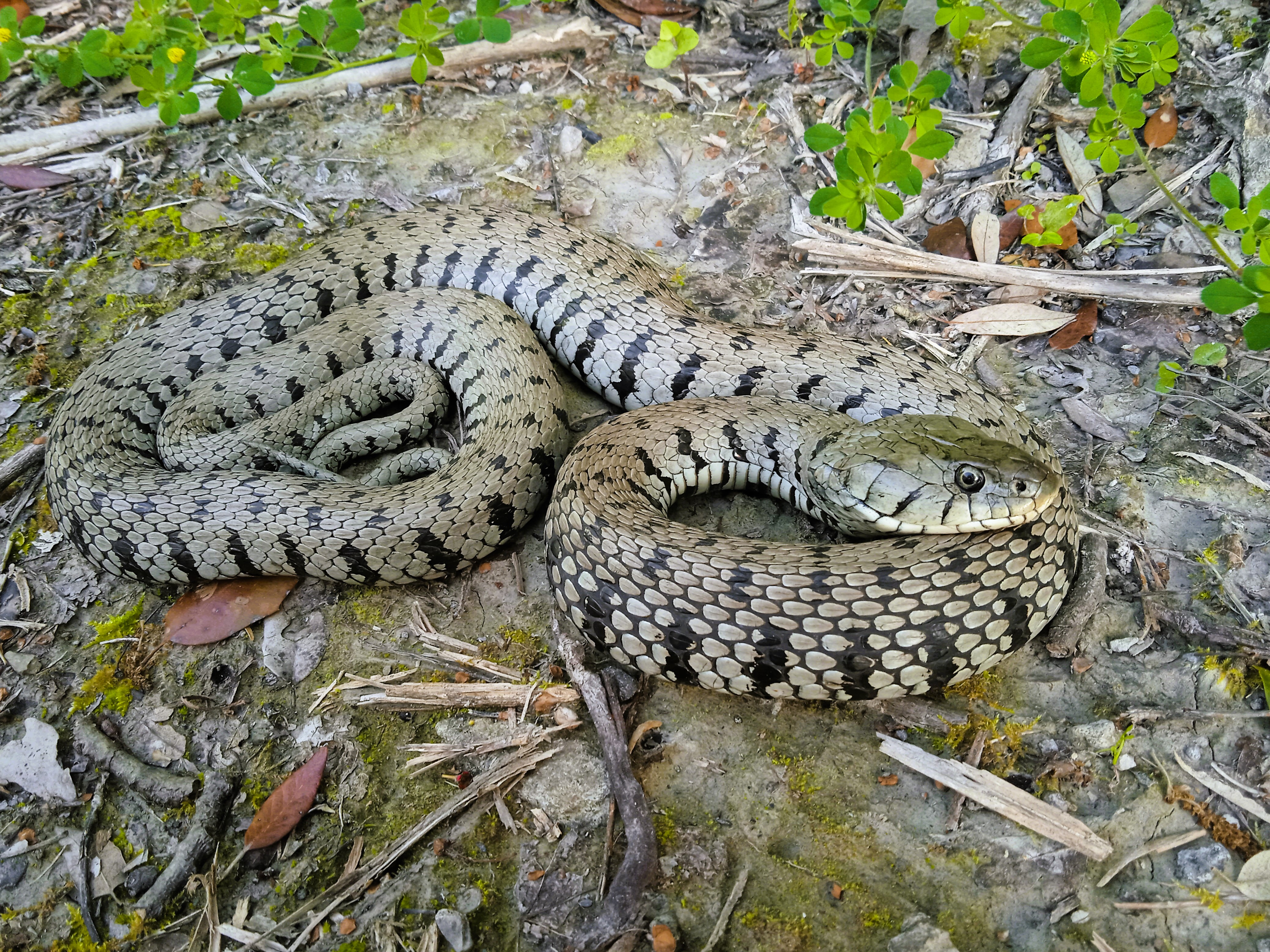
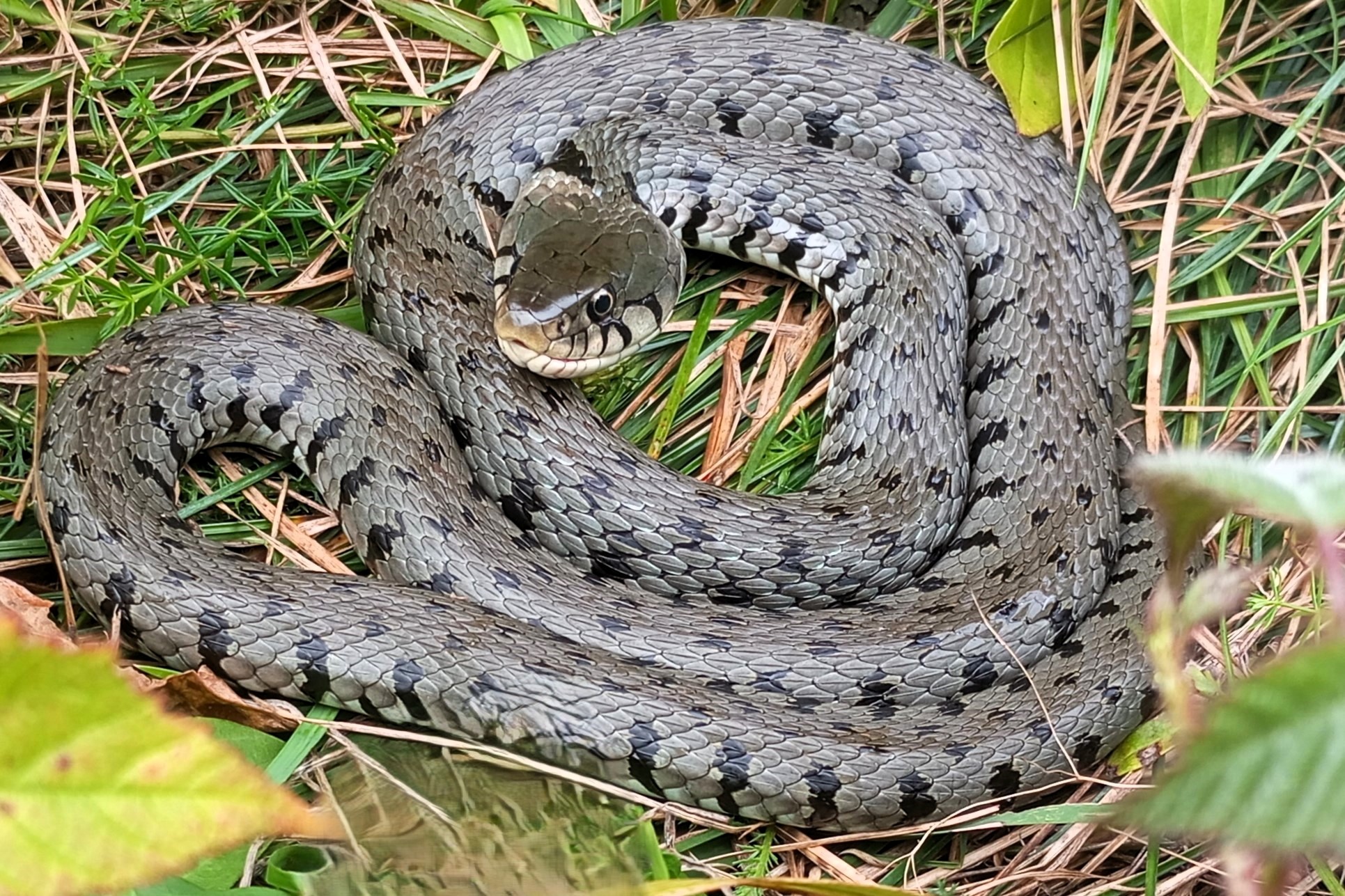
Reptilia → Squamata → Serpentes → Colubridae → Natrix → Natrix helvetica
Bissa d'aegua, Biscia d'acqua
The Grass Snake ( Natrix helvetica ) is a medium-to-large snake, known for its slender appearance and the vibrant coloration of some Ligurian populations.
The head is oval and clearly distinct from the neck, characterized by large eyes with round pupils and keeled scales that give the body a pleasant roughness.
It is a markedly dimorphic species: females can reach lengths of 47–59 in (120–150 cm) and exceptionally up to 79 in (200 cm), while males are slimmer and rarely exceed 39–47 in (100–120 cm).
The base color varies from gray-olive to brown, often with an alternating sequence of dark spots on the sides of the back.
Distinctive is the pale, crescent-shaped collar varying from white to yellowish, followed by prominent black marks behind the head, more evident in juveniles who display an even more contrasting pattern.
The belly is whitish-yellow, speckled with irregular black spots.
In the province of Savona and western Liguria, the Grass Snake ( Natrix helvetica ) is nearly ubiquitous in suitable environments, ranging from sea level up to 4,921 ft (1500 m).
It is present in all the main drainage basins, with larger populations in the humid hills and mountains of the interior.
In coastal areas, population fragmentation is more pronounced, often due to habitat loss from urbanization.
It prefers water-rich environments such as:
It is not uncommon for it to colonize even highly urbanized environments, provided there is a consistent water source.
The Grass Snake is a diurnal and completely terrestrial snake, known for its great speed of movement and a shy yet alert disposition.
Its activity begins with the first spring warmth, typically already in early March, and continues until the onset of winter dormancy, which, depending on climatic conditions, may start at the end of October or even in November in the warmest areas.
The breeding season starts in late spring: the male is territorial, and the female usually lives in the same area.
After mating, the female lays up to 20 eggs in natural cavities or beneath stones, bark, and debris, including man-made materials.
The young hatch between September and October, already active and able to reach lengths of 10 in (25 cm).
The Grass Snake ( Natrix helvetica ) is a predominantly carnivorous reptile with remarkable dietary adaptability, exploiting both aquatic and terrestrial environments. In the streams and ponds of Liguria, it mainly feeds on tadpoles, frogs, newts, and, more rarely, small fish. When it encounters larger prey, such as adult frogs or bigger fish, the Grass Snake tends to bring them ashore before ingesting them, thus reducing the risk of losing the prey in the water. On land, its diet expands to include small mammals, salamanders, toads, and small lizards, especially in woodland habitats or moist meadows.
Juveniles exhibit a more varied and opportunistic diet compared to adults, supplementing their food intake with small invertebrates such as insects, earthworms, and arachnids. Predation is rapid: prey are usually swallowed alive, stunned by the action of the saliva, which has mildly toxic properties. For anuran amphibians, the swallowing technique is unique: they are grabbed and ingested starting from the hind limbs, unlike other prey which are ingested head first.
In nature, the Grass Snake falls victim to numerous predators. These include diurnal birds of prey, such as the Short-toed Snake Eagle (Circaetus gallicus), carnivorous mammals (for example, the Fox, Vulpes vulpes), and other snakes. In aquatic habitats, large predatory fish such as Pike (Esox lucius) pose an additional risk, especially for young specimens.
However, human pressure remains the greatest threat. People frequently kill the Grass Snake by mistake, confusing it with the more feared Viper ( Vipera aspis ). The degradation and reduction of wetlands, the draining of ponds and ditches, and the intensive use of pesticides, herbicides, and other chemical products (insecticides, molluscicides) all result in population declines, altering or polluting the habitats necessary for the species’ survival and reproduction. There are also documented cases of road mortality, particularly during the reproductive migration season.
When threatened, the Grass Snake displays an extraordinary repertoire of defensive behaviors that go far beyond simple escape. At first, it may hiss and adopt threatening postures, pretending to attack—but actually biting is rare and reserved only for extreme situations, such as direct capture. If the threat persists, it may resort to spectacular strategies: regurgitating its recently ingested meal to make itself less appetizing, releasing a particularly foul-smelling secretion from the cloacal gland, defecating copiously, and spreading the feces on itself and the potential predator.
Perhaps the most surprising aspect is thanatosis: the Grass Snake becomes immobilized on its back, opens its mouth wide, lets its tongue hang out, and fixes its gaze in a glassy stare, simulating the state of apparent death. This always-convincing simulation often confuses predators, causing them to abandon their attempt at capture. This strategy, also known in other species of the genus Natrix, proves particularly effective against inexperienced or opportunistic enemies.